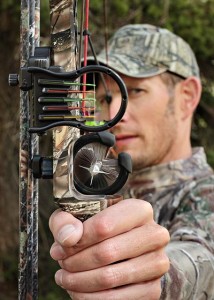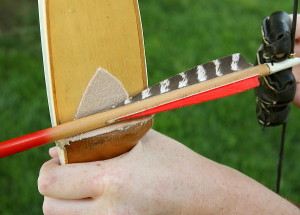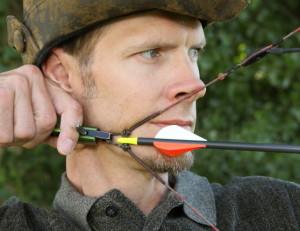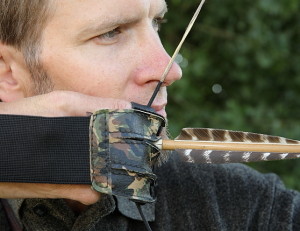How to Aim Traditional & Compound Bows
In this short article I’m going to explain the proper way to aim both traditional bows and compound bows.
Aiming Traditional Bows
Traditional bows (recurves and longbows) are aimed in the following sequence of steps:
- Nock the arrow onto your string. Grasp the string with three fingers. You can place three fingers beneath the arrow, or two under and one over. Either way is fine, however, placing all three fingers beneath the arrow will bring it closer to your eye and increase accuracy.
-
Pull the string towards your face so the arrow is directly beneath your right eye (or left eye if you’re left-handed).
- Find your anchor points. Anchor points are spots on your face where your string and hand touches. You must touch the same points with every shot. The best anchor points are a) the string touching the side or tip of your nose, and b) a fingertip (usually the middle finger) touching the corner of your mouth.
- Look though the string, or just to the side of it, while aiming down the arrow shaft at the target. Some archers literally look through the string, while others pull the string slightly to the outside of the eye. It’s a matter of personal preference. The important thing is that the string is close to your eye and pulled to the same spot every time.
- Point the tip of the arrow at the target and release. Your bow’s draw weight and distance to the target will dictate where the tip of the arrow is in relation to the the target. The farther you get away from the target, the higher you must hold the tip of the arrow to account for the arrow’s arc. The distance at which the arrow tip is on the bull’s-eye is called “point-on.” Point-on is the best reference for aiming. At distances further than point-on, you’ll hold the arrow tip higher. At closer range, hold the tip lower on the bullseye.
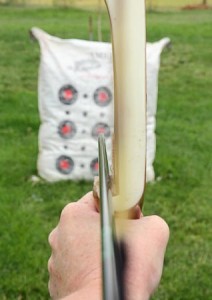
A different style of aiming is known as intinctive shooting. With instinctive shooting your focus is solely on the target rather than the arrow tip. After dozens and dozens of arrows, you will gradually fall into a natural shooting rhythm in which aiming is unnecessary, similar to throwing a baseball.
Either aiming technique is fine. In time you’ll figure out which works best for you.
Aiming Compound Bows
Modern compound bows generally use a round front sight and a round, rear peep sight built into the string. As you draw the string to your aiming eye, the small peep sight becomes a larger, dark, blurry circle approximately the same size as the round sight on the front of your bow. The bow is aimed by bringing the circles together, similar to a rifle scope.
Inside the front sight there are fiber-optic, glowing pins (anywhere from one to seven). The pins are set at measured distances from top to bottom. The top pin is usually set at 20 yards and each lower pin is set at ten yard increments. So at 30 yards you would use the second pin down, at 40 yards you’d use the third pin, and so on.
It’s important to remember that you are aligning the two circles into one circle, and then placing the sight pin on target. Beginner archers sometimes make the mistake of aligning the rear sight with the front pin instead of aligning both sights together (see examples below).
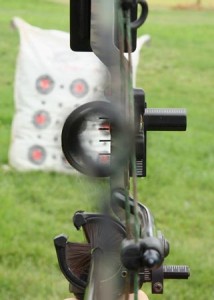
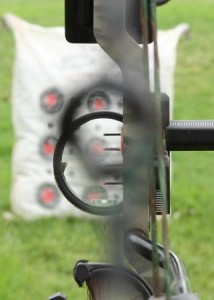
Conclusion
For the beginner archer, compound bows can be more difficult to shoot than traditional bows (recurves and longbows) because of all the extra parts. But once you get accustom to the extra step of aligning the two circles, you’ll quickly learn to shoot compound bows just as accurately or more.
All you have to do is align the front and rear sights, put the pin on the bullseye and touch the trigger release (or let go if you’re using your fingers). The bow really does all the work for you.
The basic fundamentals of archery apply to both traditional and modern bows. The main difference is how they are aimed. In my beginner classes I always start my students with traditional bows and work up to modern compounds. After that, it’s up to the student to decide which weapon he/she feels most comfortable with.

